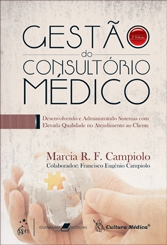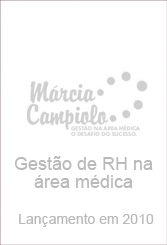 É impossível pra um homem, aprender aquilo que ele acha que já sabe
É impossível pra um homem, aprender aquilo que ele acha que já sabe 
Epiteto (Filósofo Grego, 50-130 a.C)
post consultation: do you communicate with your client?

Since some months ago, we started developing in the Londrina Eye Center a research with a variety of information about the preferences and characteristics of the customers.
In one of the questions researched, the result showed that among the clients who attend the clinic for the first time, 87% already had consulted another ophthalmologist doctor previously.
This value (87%) shows up very high, and I must admit that it is above what was expected, leading us to reflect upon some issues about the customers’ market.
We can state, even though it requires a deeper analysis in a way, that in this market, the loyalty of the customer to the doctor is very low, making the clients’ rotation rate among the clinics to be high.
Part of this stated characteristic lies on the paradigm of doctor-patient relationship often adopted.
Traditionally, this relation is set as a unilateral model where the client seeks the healthcare service, receives it and returs again, “maybe one day” ,to this same professional.
Thus, even if the quality of the service received was satisfactory, it is not rare that the client look for another professional of the same speciality in the next occasion. We can state also that, the lower the complexibility of the problem that took him to seek for a certain doctor, the lower is his loyalty to this professional. So, in the case when complex problems are the cause for a medical consultation, the chances of loyalty, when the service given was satisfactory, will be higher.
This happens because after receiving the healthcare service, the client returns to the market, where associated to the “long time between the consultations” factor, he will easily receive and provide information about healthcare professionals, in a constant mutual exchange of indications, which the force that will determine the decision of his next choice lies on multiple factors that are extremely complex and hard to control.
To break up this paradigm it needs a new model of doctor-patient relation, where the initiative of contact and communication comes not only from the client, but also from the doctor who already served him.
One of the used instruments in this process is known in the American market as “Recall”, where, throgh mail, the client is invited to return to another necessary consultation.
Recent research conducted within ophthalmologic clinics in various regions of the United States showed that 92% of these clinics use the “Recall” practice. Among these clinics, 85% use software that provide the necessary support for the efficiency of this work¹.
In Brazil, this procedure is already being used too, although the number of clinics that use it is not so significant.
In this type of procedure, attention must be given to some important considerations related to the following issues:
• Does the clinic has structure to maintain this work in a continuous way?
• Which groups would be targeted?
• Do the doctors of the clinic have time on their agenda to meet the clients who respond positively to the invitation?
• Do the involved costs outweigh the return?
• Is the percentual of the clients that respond positively to contact significant?
Besides, it is important to note that the coming mail of the clinic carries with it its image and this aspect is often neglected.
So, a special attention to the appearance of the mail must be given, as a matter of: Envelope, Printing, Paper and Text.
When adopting this type of strategy to contact the client, the goal must be the strengthening of the doctor-patient relationship, adding to it a positive value. With this, at the end, we can find an increase in the loyalty percentage of the clients, which can be traslated as having a stable and long lasting relationship with the client.
The initiative of post consultation contact carries with it the proactivity mark that usually tends to please the client who feels “cared” by the doctor chosen by him in his last medical consultation of that speciality. In the other hand, this positioning runs up head with more conservative positions which choose to keep a relation guided by unilateralism when it refers to contact initiatives.
Whatever the position of the reader is, here prevails the respect of freedom of chosing the ways that each one will follow when cunducting his career. Each one choses his own way according to his beliefs, values, and conditions.
The world’s mutation has caught us by surprise with rapid changes in the directions to be taken and in the possibilities of results, but, among the many events in the lives of healthcare professionals, one issue appeared to be common: the competitiveness is increasing exacerbatingly and the requirements in terms of what is expected from the professionals has gradually increased and changed its form, too.
The clients’ loyalty has beem widely discussed and valued and we are caught being bombarded with information, suggestions, guidelines, procedures and techniques to overcome the problem. And so, many instruments are emerging in the form of tools to reach the stability and durability in the relationship with the client. The post consultation contact or “recall” is one of these tools, but sure it’s not the only one.
To finalize, I want to cite Millôr Fernandes, a brazilian designer, humorist, and playright, today with 86 years old, who wisely said that “The price of loyalty is the eternal vigilance”.
References:
1. Brett, G., Recalls, Revisited. Administrative Eye Care, volume 15, number 4, Fall 2006.








